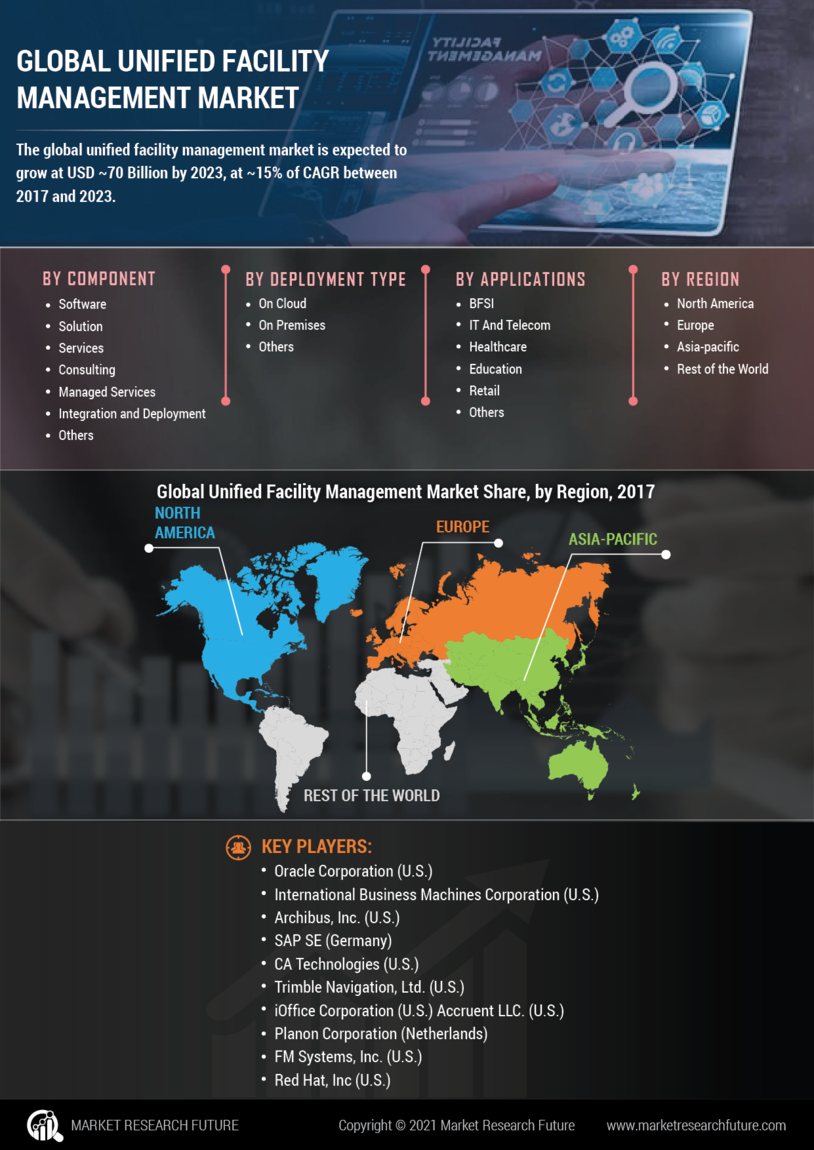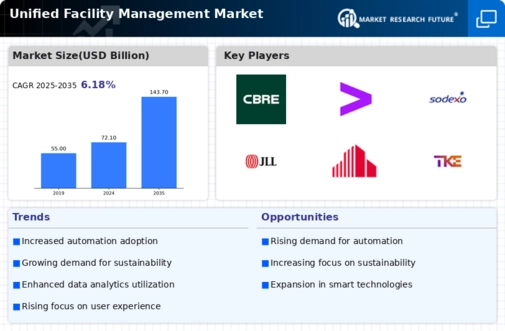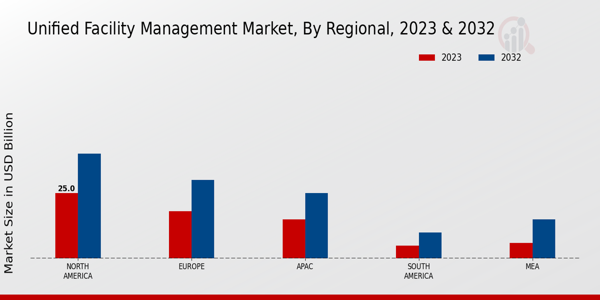Regulatory Compliance and Risk Management
Regulatory compliance and risk management are critical drivers in the Global Unified Facility Management Market Industry. Organizations must navigate a complex landscape of regulations related to health, safety, and environmental standards. Failure to comply can result in significant penalties and reputational damage. Consequently, facility management solutions that help organizations maintain compliance and mitigate risks are in high demand. This need for compliance-driven solutions is expected to contribute to the market's growth, as businesses increasingly seek to implement systems that ensure adherence to regulations while optimizing operational efficiency. The emphasis on risk management is likely to shape future facility management strategies.
Increasing Demand for Integrated Solutions
The Global Unified Facility Management Market Industry experiences a growing demand for integrated solutions that streamline operations and enhance efficiency. Organizations are increasingly recognizing the benefits of consolidating various facility management services into a single platform. This trend is driven by the need to reduce operational costs and improve service delivery. As a result, the market is projected to reach 72.1 USD Billion in 2024, reflecting a significant shift towards comprehensive management solutions. Companies that adopt these integrated approaches often report improved resource allocation and enhanced communication across departments, which can lead to better decision-making and increased productivity.
Focus on Sustainability and Energy Efficiency
Sustainability and energy efficiency are increasingly prioritized within the Global Unified Facility Management Market Industry. Organizations are under pressure to reduce their carbon footprint and implement environmentally friendly practices. This focus on sustainability drives the adoption of energy-efficient systems and practices, which can lead to substantial cost savings over time. For example, facilities that implement energy management systems often report reductions in energy consumption by up to 30%. As global awareness of environmental issues rises, the market is likely to see sustained growth, with a projected CAGR of 6.47% from 2025 to 2035, reflecting the ongoing commitment to sustainable facility management.
Workplace Transformation and Employee Experience
Workplace transformation is a key factor influencing the Global Unified Facility Management Market Industry. Organizations are re-evaluating their workspaces to enhance employee experience and productivity. This transformation often involves redesigning office layouts, incorporating flexible workspaces, and utilizing technology to facilitate collaboration. As companies recognize the link between workplace design and employee satisfaction, investments in facility management solutions that support these changes are increasing. This trend is expected to drive market growth, as organizations aim to create environments that foster innovation and engagement. The focus on employee experience is likely to remain a priority in the coming years.
Technological Advancements in Facility Management
Technological advancements play a pivotal role in shaping the Global Unified Facility Management Market Industry. Innovations such as the Internet of Things (IoT), artificial intelligence, and cloud computing are transforming how facilities are managed. These technologies enable real-time monitoring and data analysis, allowing organizations to optimize their operations. For instance, IoT sensors can track energy usage, leading to more sustainable practices and cost savings. As these technologies become more accessible, the market is expected to grow significantly, with projections indicating a rise to 143.7 USD Billion by 2035. This growth underscores the importance of technology in enhancing operational efficiency and service quality.

























Leave a Comment